Greetings from the Veg IPM team! This will be the last regular update of the season. Should an urgent issue arise, we will put out a special edition of the Plant Pest Advisory.
Sweet Corn
For those who still have silking corn, Corn earworm pressure is finally letting up throughout the state (see map). Rotation is important for avoiding resistance, and there are four IRAC groups that are registered in silking sweet corn: 1 (carbamates), 3 (pyrethroids), 5 (spinosyns), and 28 (diamides). CEW is at least partly resistant to several pyrethroids, so a spray program should not rely solely on pyrethroids, although they can be useful in tank-mixes or as pre-mixed products, such as Besiege or Elevest (Group 28 + Group 3). For detailed information about resistance and potential spray programs, the University of Delaware has an excellent resource on corn earworm management.
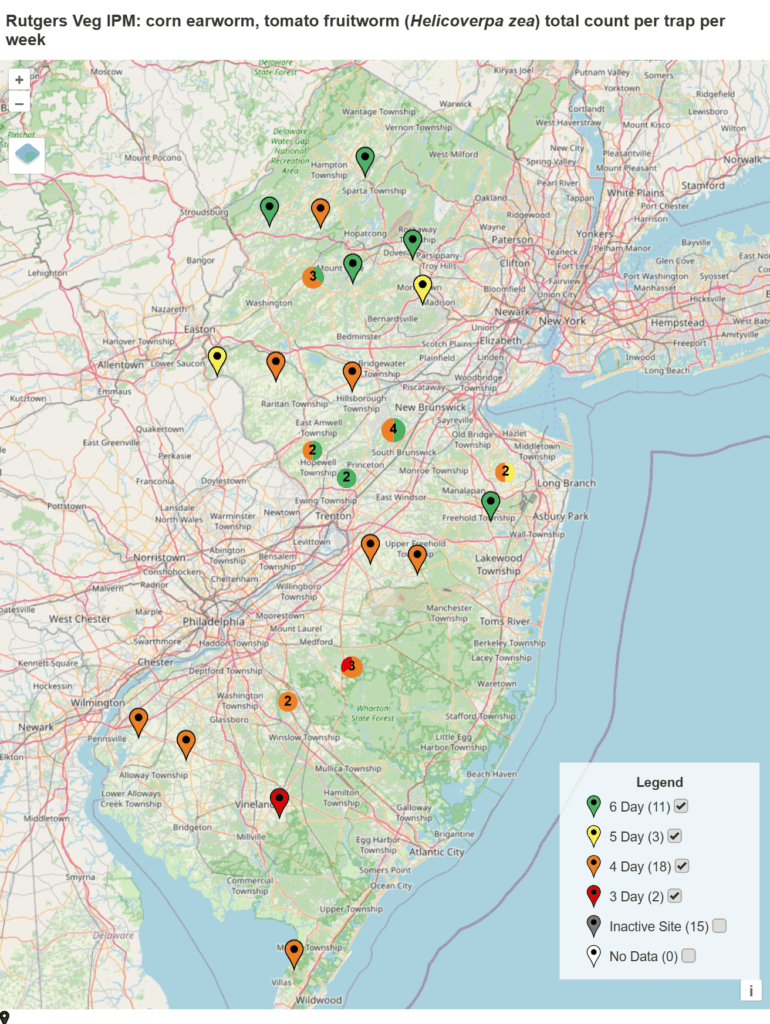
Spray intervals based on nightly pheromone moth captures for the southern part of New Jersey. Note that not all locations in the IPM program are currently trapping. This map is based on the following thresholds: 0 moths = 6-7 day schedule, 1 moth = 5 day spray schedule, 2-20 moths = 4 day spray schedule, 20+ moths = 3 day spray schedule.
Allium Leafminer Alert
Allium leafminer adults and oviposition scars have been detected across various plantings throughout the state, indicating that the second generation of the pest is active. ALM can cause injury to chives, scallions, garlic, onions and leeks, but leeks and scallions seem to be the most affected. Look for neat rows of white spots descending from the upper tips of allium leaves (see photos below). If ALM is a threat to your alliums, we recommend treating now, with subsequent sprays being made in 1-2 week intervals. Approved materials for controls include spinosyns (Radiant, Entrust (OMRI approved)), pyrethroids (Mustang Maxx, Warrior), neonicotinoids (Scorpion, Venom), and the insect growth regulator Trigard. Two or three sprays should provide adequate control.
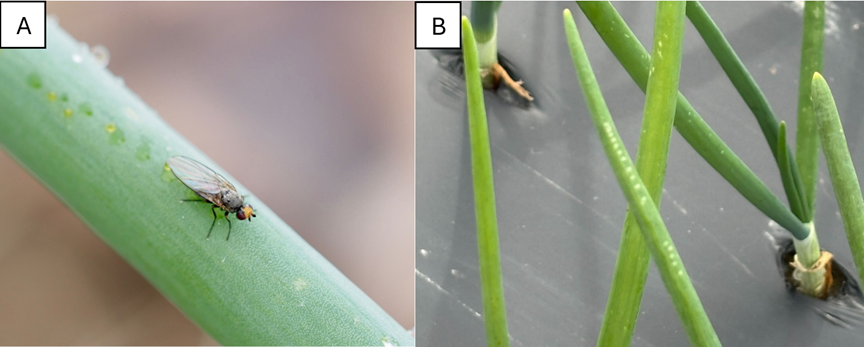
An allium leafminer adult (A) and oviposition scars (B). Photos by Maria Cramer (A) and Amanda Quadrel (B).
Tomatoes
Thrips and caterpillar pests have significantly decreased in most tomato plantings. We are still seeing a lot of spider mites, although spraying for them this late in the season is unlikely to be worthwhile. When sampling spider mites, check 10 upper leaflets in at least 5 sites per field. Typically, the treatment threshold is 2 mites per leaflet on average (one of the individual leaves that makes up the compound tomato leaf).
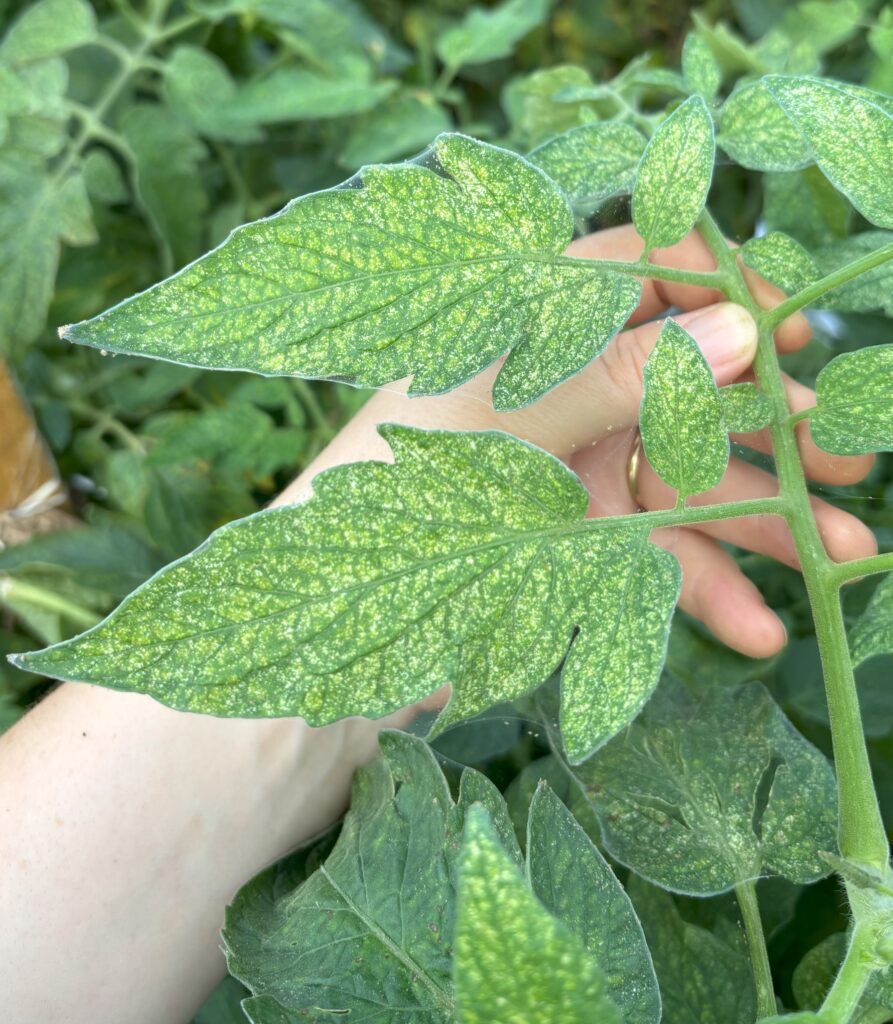
Severe spider mite infestation showing extensive stippling and webbing. Photo by Maria Cramer.
Cole Crops
We are seeing many different kinds of caterpillars in fall cole crop plantings, including diamondback moth, imported cabbage worm, cabbage looper, cross-striped cabbageworm, and yellow striped armyworm. All cole crop seedlings can tolerate up to 10% infestation for these caterpillar. For heading cole crops between early vegetative and cupping, the treatment threshold is 30%. As heads form, the treatment threshold goes down to just 5% infestation. Sprayable Bt products (IRAC 11A) such as Dipel, Xentari, or Javelin can be effective on young imported cabbage worm, cross-striped cabbageworm, and yellow-striped armyworm caterpillars. Diamondback moth has resistance to many insecticide groups, and pyrethroids (IRAC 3A) and Bt products (IRAC 11A) are not effective for their management. Besides Bt, materials approved for caterpillar control include Entrust/Radiant (IRAC 5), Proclaim (IRAC 6), Torac (IRAC 21A), and Exirel (IRAC 28). For Bt products and contact insecticides, coverage on the undersides the leaves is essential.
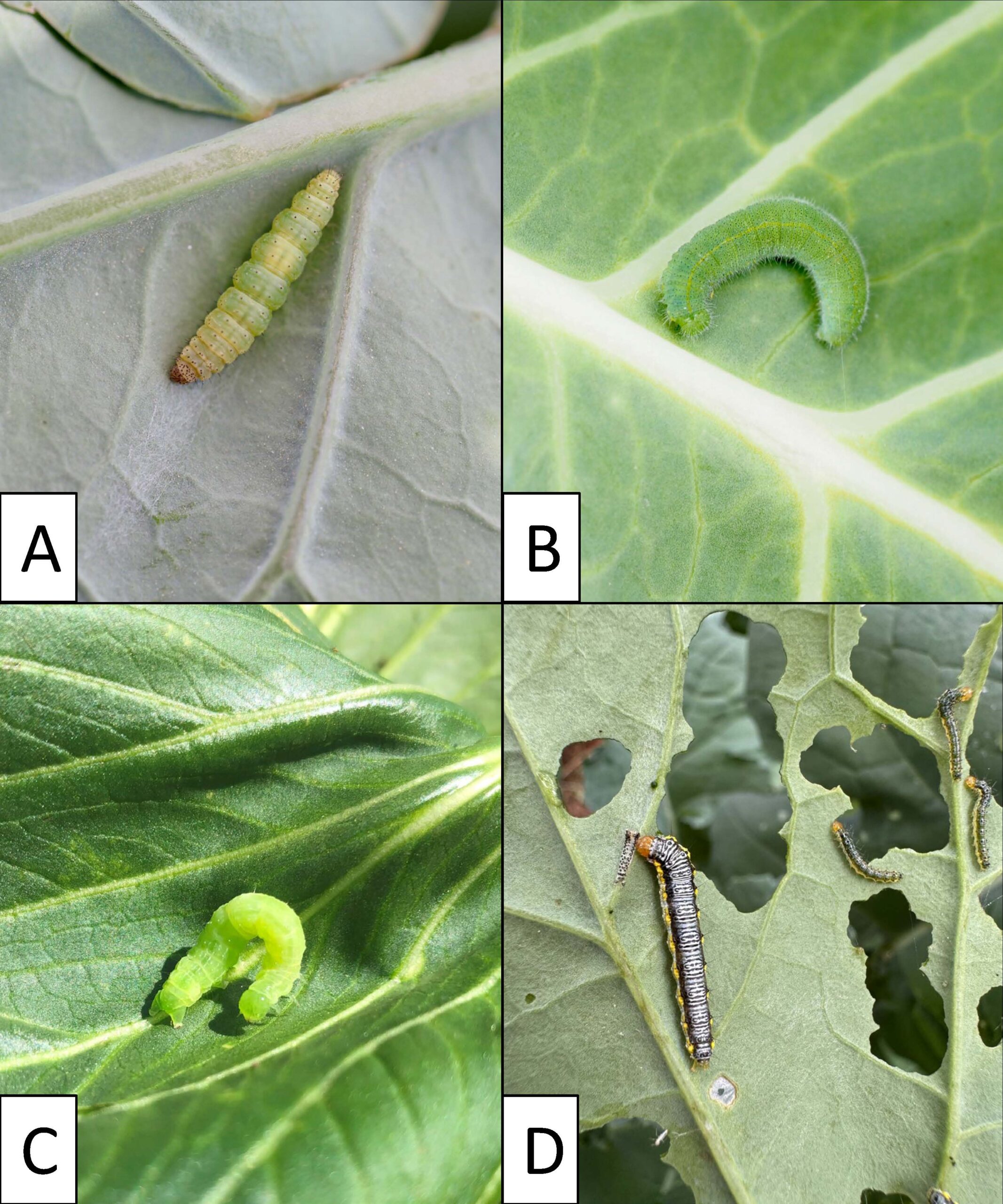
Caterpillar pests of cole crops. A) Diamondback moth — smooth and tapered at each end. B) Imported cabbageworm — fuzzy and not tapered. C) Cabbage looper — characteristic looping behavior. D) Cross-striped cabbage worm — distinctive stripes, usually occurs in groups. Photos A-C by Maria Cramer, photo D from iNaturalist COO.
Besides downy mildew in cole crops, the main diseases that are common are alternaria leaf spot, which is a fungal disease, and black rot, which is a bacterial disease. Alternaria leaf spot develops in cool wet weather and is favored by overhead irrigation. Fungicide programs that incorporate multiple modes of action (see the Mid-Atlantic Veg Guide) are needed to prevent leaf spot development. Black rot and other bacterial diseases of cole crops are hard to manage chemically. The best way to prevent their development is through selection of resistant varieties, hot water seed treatment, and rotation (2+ years between planting a brassica crop). Copper treatments provide some control.
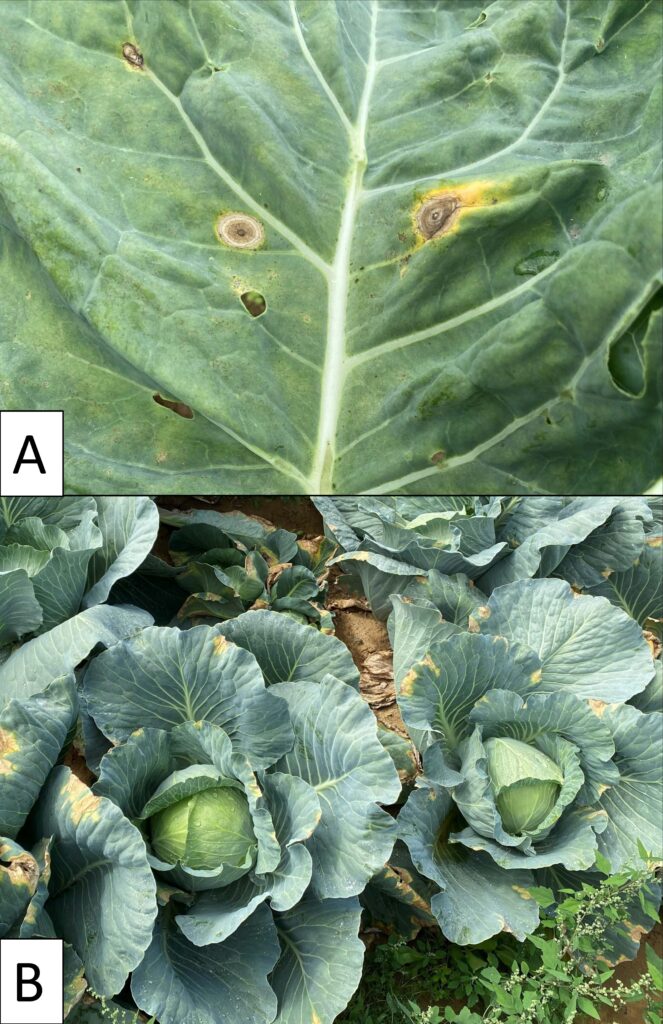
A) Alternaria: characteristic water-soaked bulls eye lesions. B) Black rot: triangle-shaped lesions on the leaf edges. Pictures by Renee Carter.
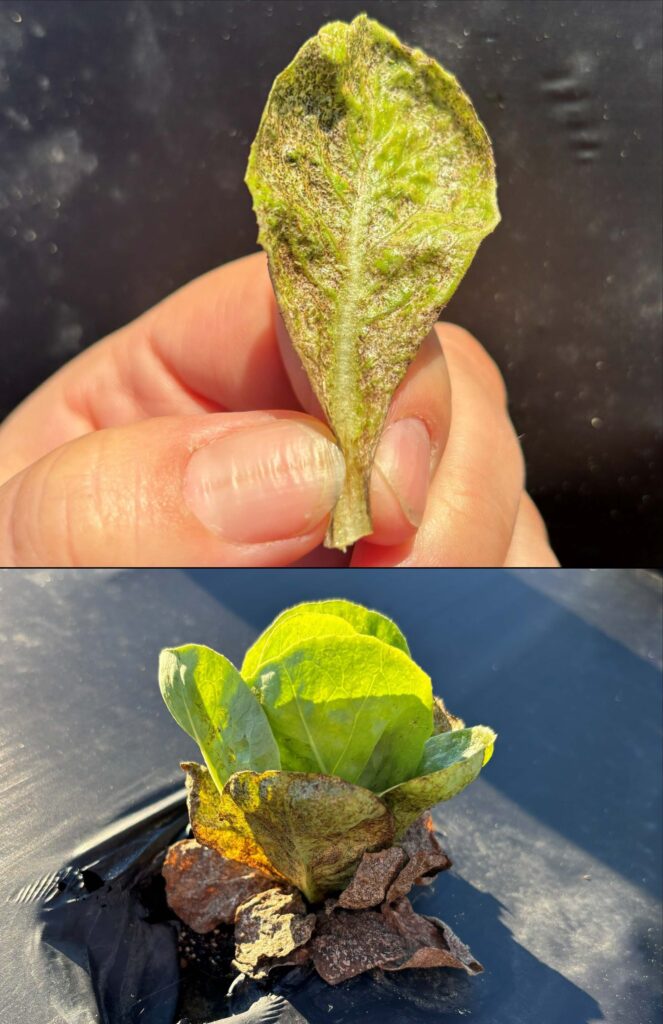
Thrips damage in lettuce, progressing from stippling damage to drying up and dying leaves. Pictures by Maria Cramer.
Pumpkins and Other Cucurbits
Pumpkin harvests are underway, and few issues have been seen in fields. Downy mildew of pumpkins and squash still has not been detected in the area and is unlikely to be a threat for this year. Powdery mildew is still active; continue treating if your fruit will be in the field for the next several weeks. Leaves will serve as protection against sunscalding of the fruits.
As always, please consult the Mid-Atlantic Commercial Vegetable Production Guide for a comprehensive list of materials that are labeled for specific crops and pests. As always, be sure to follow label rates and application instructions.
The Vegetable IPM Program wishes to thank the following Field Technicians, without whom much of the information presented weekly here would not be available.
Southern team: Renee Carter and Kris Szymanski
Northern team: Martina Lavender, Coco Lin, and Cassandra Dougherty

